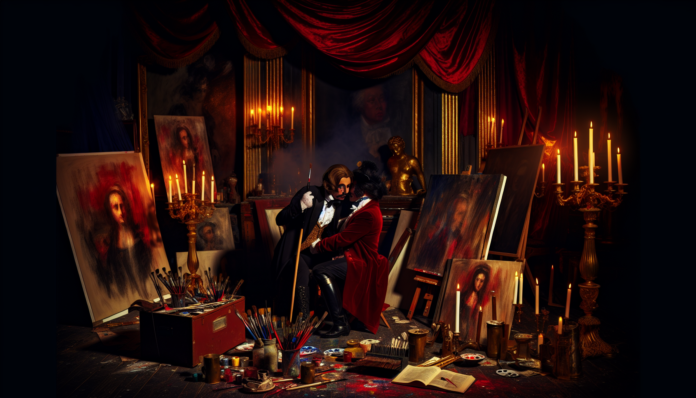Introduction
Gustav Klimt, an Austrian symbolist painter active during the late 19th and early 20th centuries, is perhaps best known for his provocative and lush artwork celebrating femininity and eroticism. His most famous piece, The Kiss, epitomizes his unique style that combines sensuality with an intricate design, yet behind this artistic brilliance lay a complex web of scandal and societal outrage. This scandal arose against the backdrop of the fin-de-siècle era in Vienna, a period marked by a tension between rigid moral standards and a burgeoning sexual liberation. Klimt’s life invites us to reflect on how societal norms set the stage for scandal and how these frameworks have evolved over time.
The Scandal
The scandal that marked Klimt’s biography became particularly pronounced in 1900 when his Beethoven Frieze, a mural created for the 14th Vienna Secessionist Exhibition, was unveiled. Although widely celebrated for its artistic merit, the mural depicted themes of eroticism and desire, featuring bare-breasted women, allegorical figures, and a powerful representation of female sexuality that shocked the conservative Viennese audiences of the time.
Key highlights of the scandal included:
-
The Artwork: The Beethoven Frieze was not merely an artistic display; it was a bold, unabashed celebration of sexual liberation. The mural juxtaposed sensual images with more mundane concepts of love and despair, challenging the conventional norms of art and morality.
-
Public Outcry: Critics were divided; while some lauded the rich visual narrative Klimt presented, many condemned the work for its perceived indecency. As journalist and art critic Julius Meier-Graefe said, “Klimt interprets the primal forces of life and love in such a way that the timid recoil.”
- Censorship: This tumult led to conversations about the boundaries of artistic expression. Many sought to silence Klimt’s work, arguing that it undermined the moral fabric of society during an era in which sexual topics were often relegated to hushed conversations behind closed doors.
Moral and Cultural Analysis
The response to Klimt’s scandal was multi-faceted, reflecting the complexities of Viennese society.
-
Victorian Influences: Much of the discontent stemmed from the Victorian moral values still prevalent during the time. Klimt’s unabashed exploration of sexuality was a stark contrast to the expected decorum, leading to vivid debates about what constituted acceptable art.
-
The Consequences: While Klimt didn’t face formal repercussions, his career experienced both support and backlash. His works began to attract larger audiences, yet they also faced intense scrutiny from traditionalists who feared what such portrayals meant for society at large.
- Contemporary Views: If Klimt’s Beethoven Frieze were unveiled today, the response might be markedly different. In the modern context, discussions around body positivity, sexual expression, and artistic freedom dominate cultural discourse. Social media platforms would likely serve as a double-edged sword, amplifying his work to global acclaim while simultaneously exposing it to criticism from more conservative factions.
Klimt’s audacity in portraying desire and intimacy, in a period where such expressions were largely taboo, resonates with today’s arguments surrounding the freedom of artistic expression and approval of sexual diversity. His legacy remains a fascinating reflection of societal evolution, proving that art continues to be a powerful portal into the human experience and the ever-changing norms of morality.

